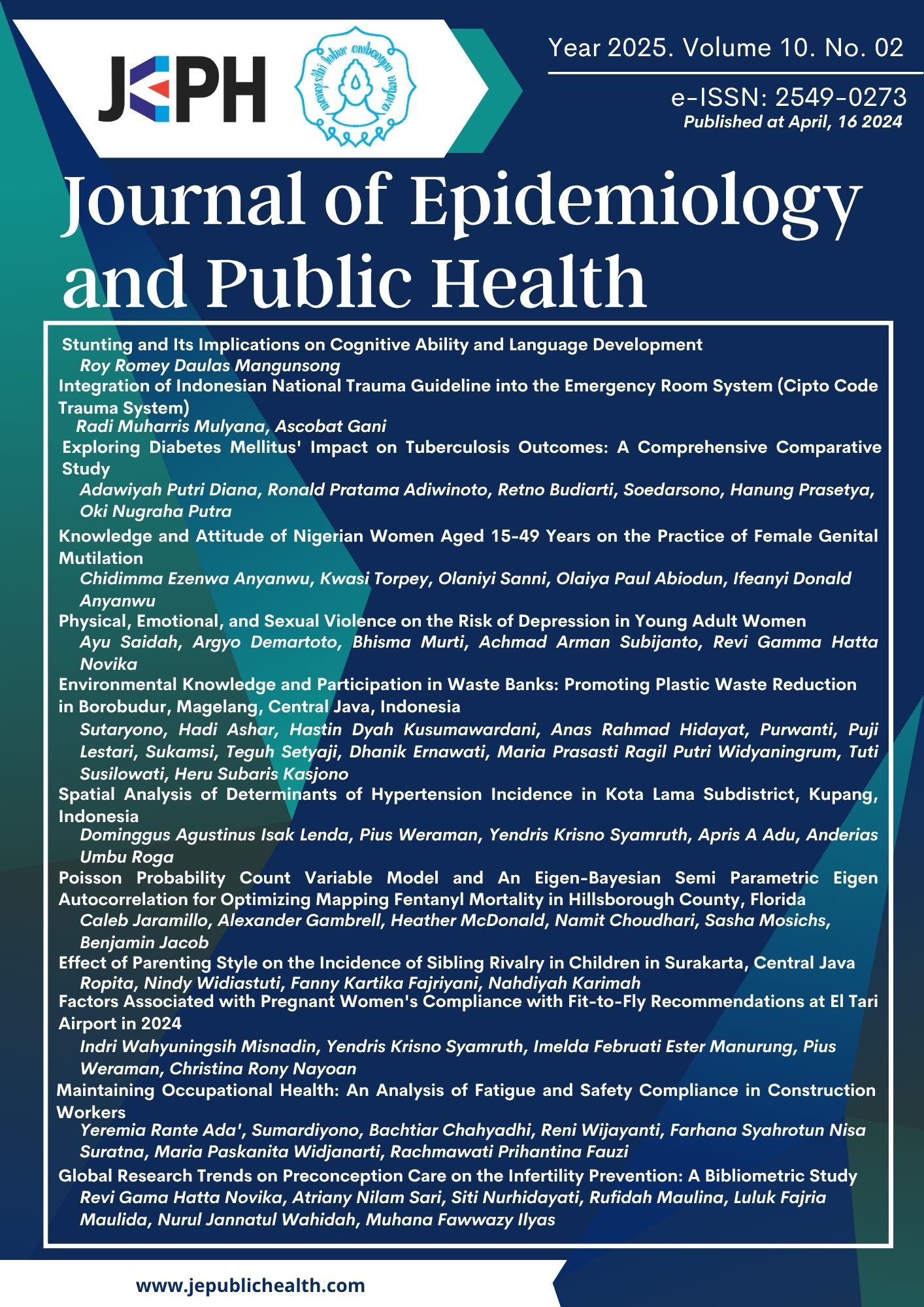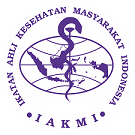Effect of Parenting Style on the Incidence of Sibling Rivalry in Children in Surakarta, Central Java
DOI:
https://doi.org/10.26911/jepublichealth.2025.10.02.09Abstract
Background: Proper parenting can reduce incidents of jealousy, competition, or arguments. (siblings' rivalry) a child towards the presence of a new sibling. One solution to the sibling effect rivalry through parents who encourage children to change their behavior, knowledge, and values that are considered appropriate so that children can be independent, grow and develop healthily and optimally, and have a sense of believe self, characteristic flavor want to know, friendly, and oriented towards progress without drop the one others. This study aimed to analyze the influence of parenting patterns on sibling rivalry in children in Surakarta.
Subjects and Method: This study employed a cross-sectional design and was conducted in the Sangkrah area, Surakarta, Indonesia. The study population consisted of parents who had more than one child under the age of five. A total of 120 respondents were selected using systematic random sampling. The independent variable in this study was parenting patterns, while the dependent variable was sibling rivalry, which was measured using a nominal scale. Data were collected directly through a structured questionnaire. The data were then analyzed using bivariate analysis with the Chi-Square test.
Results: The study showed that 77.5% (93 children) experienced sibling abuse. rivalry among them, 7 people have an authoritarian parenting style (5.8%), 101 people have a democratic (84.2%), 78 people have a permissive (65%), and 11 parents have a passive (9.2%). Permissive (OR= 1.65; 95% CI= 0.68 to 3.98) and passive parenting style (OR = 2.29; 95% CI = 0.54 to 9.66) increased the likelihood of sibling rivalry, by the associations were statistically non-significant.
Conclusion: There is no significant influence of the four parenting patterns on sibling incidents. rivalry is insignificant.
Keywords:
Pattern foster, sibling rivalry, childrenCorrespondence
Ropitasari. Department of Midwifery, Vocational School, Universitas Sebelas Maret. Jl. Ir. Sutami 36A, Surakarta, Indonesia. Email: ropita.3179@staff.uns.ac.id.
References
Barrett D, Tarrant A (2017). Parenting styles and sibling rivalry: The role of family dynamics and individual differences. J Fam Psychol. 31(5): 673–683.
Burge DM, Lewis M (2016). Parenting styles and their relationship to sibling rivalry: A cross-cultural study. Int J Behav Dev. 40(4): 351–358.
Cummings EM, Davies PT. (2017). Children and sibling rivalry: The role of parental conflict and parenting styles. Child Dev Perspect. 11(4): 243–247.
Ernawati, Khariroh S (2021). The influence of parenting styles (democratic, permissive, authoritarian, and indifferent) on sibling rivalry in preschool children. Menara Med J. 4(1): 106–111.
Fitri I, Hidayat H (2022). Parenting patterns towards sibling rivalry in early childhood. J Obs J Early Child Educ. 6(5): 4163–4170.
Fitria. (2020). The relationship between parenting patterns and bullying behavior in adolescents. Int J Psychosoc Rehabil. 24(10), 1759–1765. doi: 10.37200/IJPR/V24I10/PR300177.
Howenstein J, Kumar A, Casamassimo PS, McTigue D, Coury D, Yin H (2015). Correlating parenting styles with child behavior and caries. Pediatr Dent. 37(1): 59–64.
Indanah, Hartinah D (2017). Sibling rivalry in toddlers. J Univ Res Colloquium (URECOL). 6: 257–266.
Indonesian Ministry of Health (2021). Parenting patterns and their impact on children. Indonesian Ministry of Health.
Koepke D, Harris L (2019). The impact of authoritarian and authoritative parenting on sibling dynamics. Parent Sci Pract. 19(2): 101–115.
Lytton H, Romney DM (2018). Parent–child interaction and sibling rivalry: A longitudinal analysis. Child Dev. 89(2): 405–420.
McHale SM, Rotenberg KJ (2021). Parent-ing styles and their role in the development of sibling rivalry across early and middle childhood. Dev Psychol Rev. 37(6): 1127–1135.
Octaviani L, Prasetyo Budi N, Sari RP (2022). The relationship between parenting patterns and the incidence of sibling rivalry in toddlers in Parahu Village, Tangerang Regency. Nusantara Hasana J. 1(8).
Ryckman SM (2022). Sibling rivalry. Univ Mich Health. Available from: www.mottchildren.org/posts/your-child/si-bling-rivalry
Stern P, Bresson M (2020). The influence of parenting styles on the development of sibling rivalry in early childhood. Dev Psychol. 56(9): 1685–1697.
Syukri M (2020). The relationship between parenting patterns and bullying behavior in adolescents of SMP Negeri 19, Jambi City. Sci J Batanghari Univ Jambi. 20(1): 243–246.
Tridhonanto A (2014). Developing democratic parenting patterns. Jakarta: Elex Media Komputindo.
Turner HA, Finkelhor D (2022). The effects of parenting styles on childhood behavioral issues and sibling rivalry. Int J Child Adolesc Health. 10(2): 89–97.
WHO (2018). Child health. World Health Organization.
Yaerina YN (2016). The relationship between parenting style types and the incidence of sibling rivalry in children aged 3–12 years in Joho Village, Pace District, Nganjuk Regency. Faculty of Medicine, Airlangga University.
Zahro NH, Febrianto MV, Susanti S (2022). Parenting patterns and their impact on children. J Barrett D, Tarrant A (2017). Parenting styles and sibling rivalry: The role of family dynamics and individual differences. J Fam Psychol. 31(5).
Downloads
Published
2025-04-16
Issue
Vol. 10 No. 2 (2025)
Section
Articles




1.jpg)








